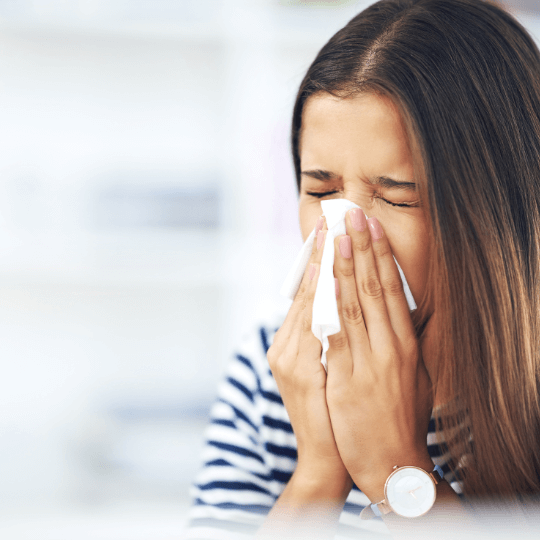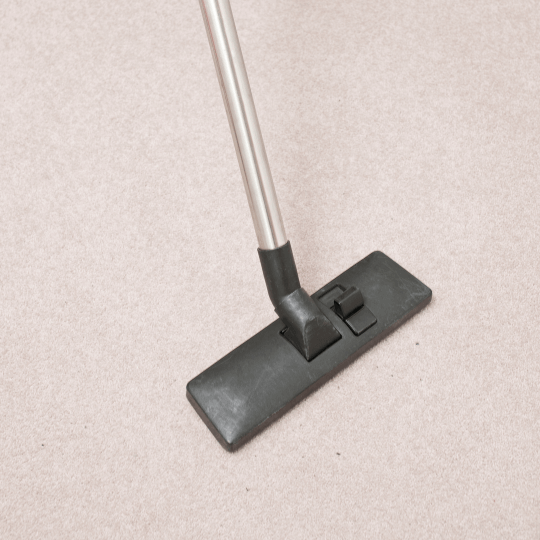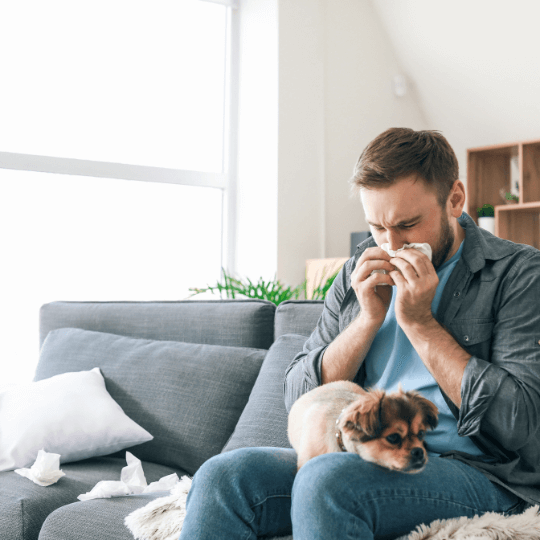Austin’s vibrant wildflowers and lush landscapes are a sight to behold, yet these natural beauties come with a cost for allergy sufferers. Known for its high pollen counts, particularly from the infamous cedar fever, this Texan city sees a significant portion of its residents grappling with allergy symptoms year-round. This reality can turn a simple home accessory like a carpet into a significant nuisance and carpet care a priority.
The dense fibers of carpets act as magnets for allergens such as pollen, dust mites, and pet dander, which quickly settle and accumulate within their weaves.
Without regular and thorough cleaning, carpets can exacerbate allergies, transforming living spaces into hotspots for itchy eyes, runny noses, and relentless sneezing.
Fortunately, carpets can be a safe and comfortable addition to any home for allergy sufferers with proper care and maintenance.
In this guide, we will explore the best practices for keeping carpets clean and allergen-free and for helping you breathe easier in your home.
The Importance of Carpet Care & Hygiene for Allergy Sufferers

Carpets, despite their warmth and aesthetic appeal, can be problematic for allergy sufferers because their fibers provide a near-perfect environment for allergens to thrive.
These allergens, such as pollen, pet dander, and dust mites, get trapped in the dense pile of the carpet, where they can be disturbed by simple daily activities like walking or vacuuming. Thus, they are released into the air and trigger allergic reactions.
Regular carpet care, which includes vacuuming with a HEPA filter, professional cleaning, and the use of anti-allergen treatments, can greatly mitigate allergy symptoms.
By reducing the overall allergen load in the home environment, allergy sufferers can notice a significant decrease in daily symptoms, leading to a better quality of life and a more enjoyable living space.
Choosing the Right Carpet
Tips for Selecting Allergy-Friendly Carpet Care Materials
- Opt for synthetic fibers like nylon and polyester, which are less attractive to dust mites and mold than natural options like wool.
- Choose carpets with short-pile or tightly woven fibers for easier cleaning and reduced allergen retention.
- Look for carpets treated with anti-static and antimicrobial finishes to diminish the growth of allergens.
- Consider carpets with low VOC levels to minimize the emission of chemicals that can trigger allergic reactions.
The Role of Carpet Pile Height and Density in Allergen Accumulation
The pile height and density of a carpet play a significant role in allergen accumulation.
High-pile carpets, such as shag, tend to trap more allergens due to their long, loose fibers, which create a deep structure for particles to settle into. In contrast, low-pile carpets, with their short, dense fibers, provide less space for allergens to embed and are consequently easier to clean and maintain.
When selecting a carpet, opting for a low-pile, tightly woven option not only facilitates more effective cleaning but also minimizes the presence of allergens, making it a more suitable choice for those with allergies.
Routine Maintenance: Vacuuming and Beyond

- Regular vacuuming is essential in maintaining a low allergen level in carpets. For the best results, consider the following practices:
- Frequency of Vacuuming: Vacuum at least twice a week, and more frequently in high-traffic areas or if you have pets. This helps to remove allergens before they have a chance to settle deeply into the carpet.
- Quality of Vacuum Cleaner: Use a vacuum cleaner with a HEPA (High-Efficiency Particulate Air) filter to effectively capture even the smallest allergen particles, as opposed to regular vacuums that can re-release allergens into the air.
- Proper Technique: Move slowly and cover each section of the carpet several times from different directions to ensure maximum allergen removal. Use attachments for edges and tight spaces where allergens often accumulate.
- Maintenance of Vacuum Cleaner: Perform regular maintenance on your vacuum. This includes cleaning or replacing filters, emptying the canister after each use, and checking for clogs, as a poorly maintained vacuum loses suction and becomes less effective at allergen removal.
Adhering to these vacuuming practices can help allergy sufferers significantly reduce the presence of irritants in their living spaces.
Deep Cleaning Techniques
- Beyond routine vacuuming, it is important to invest in periodic deep cleaning, particularly for allergy sufferers. Consider professional carpet cleaning services if:
- Annual Cleaning: Scheduling at least once a year to remove deeply embedded allergens and debris.
- After an Allergy Flare-up: If household members experience a noticeable increase in allergy symptoms.
- High-Pet Presence: Homes with pets may require more frequent deep cleanings due to pet dander and hair.
- Following Major Spills or Stains: To prevent mold growth and remove stains that can attract more allergens.
Recommended deep cleaning carpet care techniques for allergy sufferers include:
- Hot Water Extraction: Often referred to as steam cleaning, this method injects hot water and cleaning agents into the carpet and immediately extracts them along with the dislodged allergens.
- Dry Cleaning: Some services offer low-moisture alternatives, which use compounds and solvents to remove allergens without the extended drying time.
- Use of Allergen-specific Solutions: Ensure that the cleaning service uses solutions designed to target allergens, hypoallergenic, and free of irritants.
Individuals with allergies can significantly mitigate allergen exposure indoors by incorporating regular professional deep cleaning into their home maintenance.
Natural Remedies for Carpet Care & Cleaning
- For those who prefer natural and DIY solutions, maintaining carpet hygiene can be both safe and effective using common household ingredients. Ingredients such as baking soda and vinegar are excellent for simple carpet care:
- Baking Soda: A natural deodorizer, sprinkle a generous amount of baking soda on your carpet, let it sit for at least 15 minutes or overnight for stronger odors, then vacuum it up. This helps in absorbing odors and can often alleviate mildew smells.
- White Vinegar: Known for its disinfectant properties, mix equal parts water and white vinegar in a spray bottle. Lightly mist the solution onto the carpet, avoiding over-wetting, and then allow the area to air dry. This can neutralize odors and remove light stains.
- Essential Oils: To impart a pleasant scent, a few drops of essential oils like lavender or eucalyptus can be added to the baking soda or vinegar solutions. These oils can also offer antibacterial and antifungal benefits.
- Lemon Juice: Because of its natural bleaching and deodorizing qualities, lemon juice can be used to tackle stains and freshen carpets. However, always test on a small, inconspicuous section first to prevent accidental discoloration.
By using these natural remedies, individuals not only reduce the presence of toxins in their homes but also contribute to a healthier indoor environment.
Addressing Humidity and Air Quality

Austin’s high humidity levels can exacerbate allergen problems in carpets by providing an ideal environment for mold growth and dust mites, both of which thrive in moist conditions. These allergens can trigger respiratory issues and allergic reactions for occupants.
To combat this, integrating dehumidifiers into home maintenance routines can significantly reduce indoor moisture levels, thereby hindering allergen proliferation. Furthermore, the use of air purifiers equipped with HEPA filters can capture airborne allergens, such as pet dander, pollen, and dust mite waste, improving the overall air quality inside the home.
Together, these devices work cohesively to maintain a healthier indoor environment, mitigating the impact of Austin’s humidity on carpet-related allergens.
Smart Habits to Minimize Allergens
Developing daily habits such as removing shoes before entering the home, frequent vacuuming with a HEPA filter-equipped vacuum cleaner, and dusting with microfiber cloths can drastically reduce the accumulation of allergens.
It is equally important to regularly inspect areas prone to allergen buildup, such as carpets, upholstery, and bedding, ensuring timely washing or deep cleaning interventions. Emphasizing preventive measures, alongside prompt responses to signs of allergen presence, creates a proactive defense against potential allergy triggers within the home.
Regular maintenance and cleanliness are key to ensuring a healthier living space, free from the irritants that can compromise well-being.
Conclusion
Maintaining clean carpets is a game changer when it comes to reducing allergy symptoms. Implementing a comprehensive approach that combines routine cleaning, specialized filtration devices, and smart daily habits constitutes a formidable strategy in the battle against indoor allergens. By doing so, you can create a safe haven in your home, promoting a clean aesthetic and a haven for health and well-being.
Breathe Easy with Yess He Will
Take the first step towards a cleaner and healthier home environment with Yess He Will Carpet Cleaning services. Our experienced team is equipped with state-of-the-art tools and eco-friendly cleaning solutions to revitalize your carpets and eliminate allergens. Don’t let irritants compromise your comfort and well-being. Contact us today for a free assessment and to schedule your professional carpet cleaning service. Breathe easier knowing your home is in expert hands with Yess He Will Carpet Cleaning.

